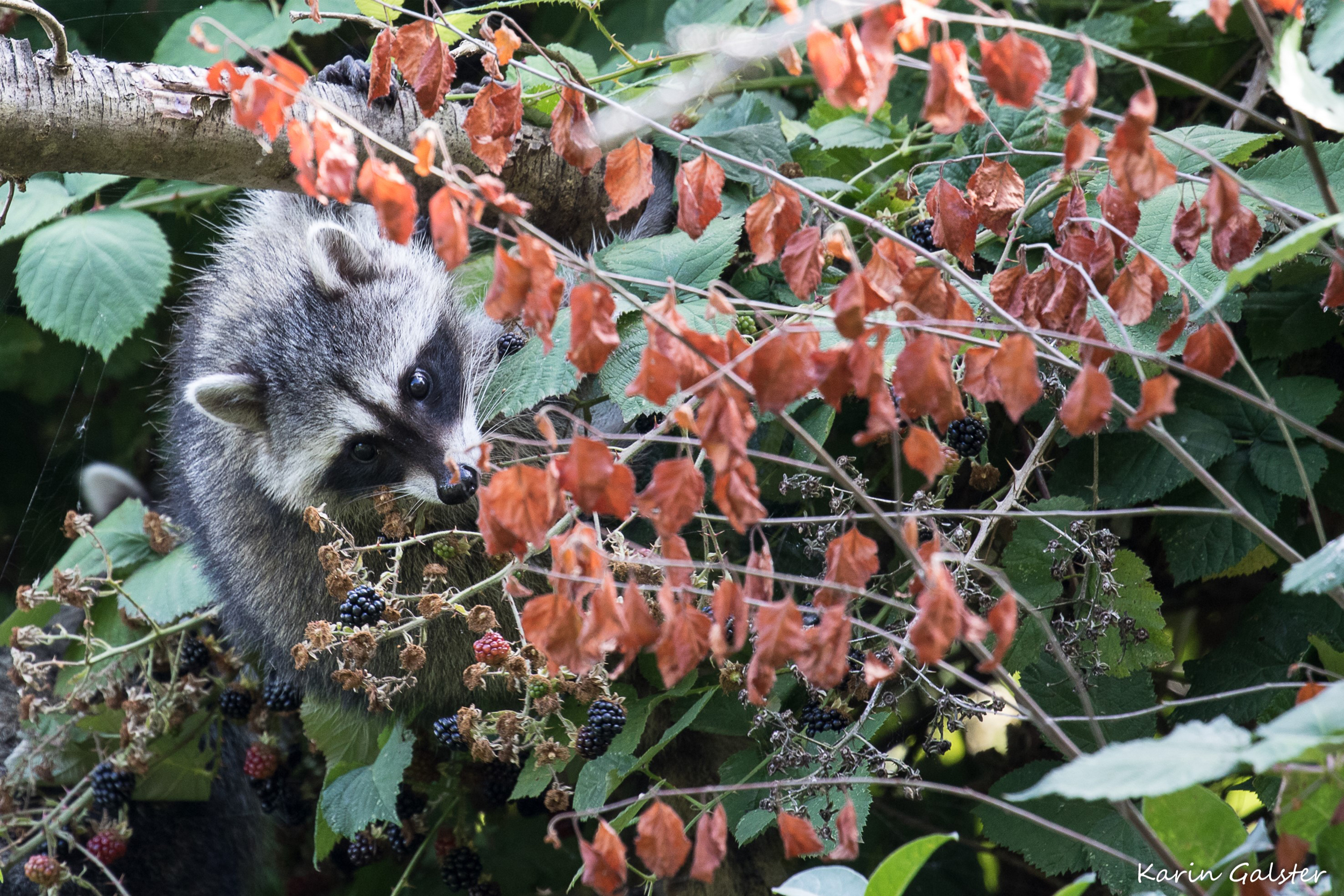The raccoon, or common raccoon (Procyon lotor) is a mammal native to North America. In its original range it can be found in a variety of habitats, deciduous and mixed forests as well as marshlands or wetlands near rivers and lakes. From there it has extended its range into urban parcs and gardens in Canada and the United States where it regularly rifles through bins to extract anything vaguely edible. Its characteristic black facial mask with a contrasting white border as well as the fluffy black and white ringed tail make it very easy to identify. Even if the raccoon belongs to the order of carnivores, its diet is extremely varied and, depending on availability, includes insects, worms, small mammals lik mice and voles, fish, crayfish, amphibiens, fruits and berries as well as acorns, nuts and even bird eggs. The few studies that have been undertaken to assess the mental abilities of the raccoon have shown that it is a higly intelligent animal with a very good memory. In North America it has a number of natural predators such as bobcats, coyotes, great horned owls, some diurnal raptors, as well as black bears and cougars. However its most indiscriminating predator is man, as sadly the raccoon is still being hunted for fur and it would appear that several thousands of them even end up on dinner tables every year in the Southern regions of the United States…..
The raccoon is a highly adaptable predator that has no trouble occupying new and diverse territories. It was introduced to Europe in the 1930’s for fur farming and as pets, and the animals that either escaped or were deliberately released managed to establish thriving populations in the wild in a short period of time. Today the raccoon is considered as a serious threat to local wildlife, it has been classed an invasive species by the Council of Europe and as such is extensively hunted. It is sad to see that such an endearing and intelligent animal is having to pay the heavy price for what is after all not its fault…..
























































